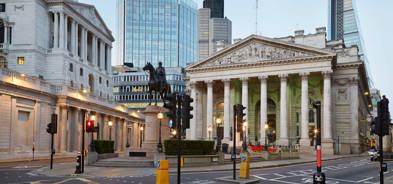Learning the lesson: current prospects for global markets
It’s now more than six months since the trough of global equity markets in response to Covid-19. Here, Head of Investment Strategy Gareth Lewis re-examines the events of March and applies some of the lessons learnt to current prospects for global markets
The value of investments can fall as well as rise and that you may not get back the amount you originally invested.
Nothing in these briefings is intended to constitute advice or a recommendation and you should not take any investment decision based on their content.
Any opinions expressed may change or have already changed.
Written by Gareth Lewis
Published on 27 Oct 202017 minute read

Back in March global stock markets were moving plus or minus 5% in a day, market circuit breakers were deployed in the US and the US Federal Reserve (Fed) had to inject significant levels of liquidity into the US Treasury market, which is one of the most deep and liquid markets in the world. Declines during that period were significant.
The speed of March market declines was remarkable…
Peak to trough the S&P 500 fell nearly 28%. In the context of some of the big bear markets of the past, this is noteworthy but not record breaking. What was record breaking was the speed of those declines: a 28% decline occurred in just 30 trading days and this period of significant market dislocation had a material impact on risk assets and the valuation of assets in many different asset classes.
… blaming these solely on the virus was overly simplistic
It’s quite easy to say, “that’s Covid-19. It’s a global pandemic. What do you expect?” But we think explanations for the speed of the fall are actually more complex than just Covid-19. And understanding why markets reacted as they did doesn’t just help us understand the recovery we’ve seen, it also helps to plot a path to where we may go next.
The impact of market positioning on market reaction in March
Over the 10 years since the global financial crisis, investors have developed a sort of ‘Pavlovian’ response to bad news: the worse the news, the more stimulus you get from central banks, and the more stimulus you get from central banks, the more asset prices rise. This effectively created a situation where investors felt somewhat immune to the risks they were taking in portfolios.
Highly levered and in search of liquidity
Going into March, many investors were carrying relatively high-risk positions in portfolios – often highly levered – and when you end up with events like we had in March people with highly levered positions need to liquidate to meet margin calls. A lot of what we saw in March was to do with the search for liquidity and it was that search for liquidity that drove not just high-risk equity-type assets but bond markets and even gold and other asset classes into a tailspin.
Trading the response to the virus, not the virus
Investors were not trading the virus, they were trading the response to the virus. This may seem like a semantic difference but I think it’s very important. When markets started to fall in March, it wasn’t the fact that infection rates were picking up that caused the damage. It was the movements by governments to start closing borders, restrict trade, shut non-essential retail outlets and impose curfews that created the economic consequence that actually created the sell-off.
Belief that policymakers were taking appropriate action
This, in combination with the policy responses we saw from central banks, created an environment where markets fell and then managed to find a support level and recover. And, in this, the psychology of human nature is incredibly important. We as human beings all want to believe that there is someone out there in control of the situation and that the actions those people are taking are appropriate to the magnitude of the problem and will bring it under control.
The way in which markets behaved during this period was largely in response to policy. It was the lockdowns that created the initial sell-offs, but when we got to peak lockdowns, investors took the view that governments were taking appropriate actions to stem the flow of the spread of the infection. Then, when central banks stepped in with lower interest rates and further quantitative easing (QE), it created an environment where investors believed that the situation was under control.
Parallels to the global financial crisis
We can draw some parallels with the events of the global financial crisis in 2007-09. Think back to September 2008, when Lehman Brothers failed; there was an additional six-month period when asset prices fell despite central bank action. It was not until March 2009 that the markets started to recover. The reason it happened was because investors felt, for the first time, that policymakers were ahead of the curve in terms of dealing with the problems rather than reacting.
One of the things that I think turned markets so quickly in March this year was that policymakers had learnt the lessons of 2007-09 and they went early and they went hard in terms of both the lockdown and in terms of the monetary and fiscal support the economy was receiving. This created a sufficiently positive environment for markets to turn.
How would investors behave during the Covid cycle?
When the markets started to turn, we were thinking about how investors would behave during the whole of the Covid cycle and the way we thought about this was a three-phase response.
Phase 1 – the sell-off was largely indiscriminate
The first phase – one that arguably finished on the 23 March – was a largely indiscriminate sell-off. This wasn’t driven by rational assessment of economics, because you can’t model the economics. It was really driven by the search for liquidity, and a combination of events brought this to an end. It was the policy responses referred to above but also the fact that the S&P futures & options expiry took place on 23 March, which brought an end to this fairly panicky selling that allowed the markets to drop.
Phase 2 – confidence in the policy response
The second phase is the one we’re in at the moment. In my view it’s probably the most dangerous phase in many ways and is driven by confidence in policymakers and confidence that policy response will be of sufficient magnitude to deal with the threats posed to the global economy. You can see this in the nature of the rally. It’s been typified by a high beta rally of those stocks priced to fail during the March sell-off. It’s dangerous because it gives the impression that everything is returning to normal: asset prices have recovered, therefore there is an assumption that the worst of the economic consequences are behind us.
The second phase is probably going to be called into question, partly because we’re seeing an increase in infection rates but it’s mainly because investors will now question whether policymakers are genuinely in control of the situation. You only have to look at the way in which the UK Government has responded to recent increases in infection rates to understand how some people will lose confidence in the way in which this situation is being managed.
Phase 3 – growing fear of corporate failure
The third phase, and it may well be the phase we go into this year and into next year, is where investors start to question the validity of the asset price recovery and start to focus more on the fundamentals. You will start to see much greater focus on the fear of corporate failure because although the policy response is very positive and it’s of enormous magnitude, it can’t prevent weak companies with poor free cashflow and heavily indebted balance sheets from failing. It doesn’t mean to say that they will all fail, but some will and when you start to focus in on potential for failure and permanent loss of capital, investor behaviour starts to change. Investors start to look at those companies that will not just survive but thrive in the new environment.
Markets have recovered since peak response
Looking at the way markets actually responded, this chart shows the speed of the recovery from the market trough on 23 March driven by this combination of peak response in terms of lockdowns driven by peak response in terms of monetary and fiscal policy responses and also driven by the ending of the March futures and options period.
I suspect that what we’ve seen over the subsequent six months is merely investors who unwound high-risk positions in March actually opening those positions again in this high beta rally. Thinking back to the Pavlovian response that was questioned in March, you could argue that the view being taken was actually the right one: central banks have intervened, central banks have bailed out asset prices and will probably continue to do so in the future. There are probably some quite big ‘risk on’ positions in markets at the moment, which are potentially at risk of unwinding with a second round of lockdowns.
I’ve done a breakdown of the nature of the recovery since 23 March and as I highlighted earlier it’s driven largely by the high beta cyclical areas of the market. The top shows the Russell 3000 – the broadest of the US indices. It’s been led by materials and producers – mining, metals, mineral extraction, and consumer discretionary. The two sectors that have been most impacted have led the recovery and if you actually look at it at a stock level (the lower part of the chart) you can see that the 10 best-performing stocks in the S&P 500 have been dominated by mining, mineral extraction, oil & gas, leisure stocks, which are the ones that you would naturally bet to be most significantly impacted.
I pick on one line for more detail – Royal Caribbean, the cruise ship owner. This share price had recovered 190%, trough to 1 September. This is despite the fact that Royal Caribbean is not forecast to record a profit for the next 12 months. It’s recorded two quarters of losses since lockdown with another four quarters to come and even when it does return to a forecast profit in the fourth quarter next year – predicated on lockdowns being eased – those profits will be roughly 25% of previous peak profits. Now despite that very weak earnings outlook, the share price is up 190%. So you have to question the fundamental nature of the recovery we’ve seen and whether it is actually sustainable.
The role of technology
This is an important aspect of the recovery. It’s received an awful lot of press recently because of the way in which five key stocks dominate the S&P 500: Microsoft, Apple, Amazon, Alphabet and Facebook now constitute over 21% of the S&P 500. This far eclipses the dotcom bubble peak when it was Microsoft, GE, Cisco, Intel and Walmart.
This is one of the big differentiators in terms of performance that investors will have received. Your exposure to a combination of high beta stocks through the last six months and your exposure to global tech companies really explains the differential in performance.
Don’t think of investment in terms of markets or indices; indices are an amalgam of both good and bad and just buying an index is not necessarily the right way of thinking about investing because you are buying both exposure to Apple and Microsoft and you’re also buying exposure to Royal Caribbean in the S&P500.
It’s not just the US indices that are dominated by this factor. Owning those stocks has made a massive difference to the performance of portfolios. As an example, if you have global tech and no UK, you will have done an awful lot better than if you are overweight UK with very little global tech. This really is the story of the current year.
If you look at the chart, you can see the progress of the US Federal Reserve’s balance sheets from 2007 pre the global financial crisis to projections for the end of 2020.
- Going into the global financial crisis you can see quite clearly the Federal Reserve’s balance sheet running pretty consistently at US$1 trillion
- There was a sharp spike up around the time of Lehman’s failure; they started to initiate QE policies and an incremental increase through three rounds of QE and Operation Twist, which saw the balance sheet peak in 2013/2014 all the way through to 2018 at US$4.5 trillion
- There was material liquidity injection to support global economic activity, to bail out or help support the banks and provide lower cost of capital for the corporate sector
- Into 2018, there was a slight decline– with the Fed raising rates slightly and also quantitative tightening – before we go into the current period
- You can see this projection of the Fed’s balance sheet going from a little over US$4 trillion to very nearly US$9 trillion in the space of a year so it took the Fed nearly 10 years to double its balance sheet post the Global Financial Crisis, which we thought was remarkable, to then double it again in the space of eight months
However you view it, this is an absolutely remarkable level of response. The balance sheet is now around US$7.2 trillion and actually it’s been slowing down recently in terms of expansion and, in my view, that is one of the reasons – rather than necessarily the Covid situation – why risk assets have started to lose a bit of momentum.
The Fed has plenty of firepower left
In terms of magnitude of the response available, the Federal Reserve is really only just starting. It still has material levels of firepower available.
Think about this in the way governments and central banks are behaving. They can allow the system to clear. They have the option to allow companies to fail and in doing so increase significantly the long-term levels of unemployment. Or they have the option to intervene to support businesses by whatever means they have available to them. Quite clearly, they have opted for the second option and, in my view, there is an open-ended commitment and it will carry on for the foreseeable future.
Fiscal policy adds a new dimension…
What makes this different to what we’ve seen before is the fiscal side. In the past, central bank action was largely exercised through the bond markets. It was designed to drive down cost of capital to the corporate sector. This time round a lot of QE policies are actually being used to fund specific fiscal commitments from governments.
This is a significant change because the ways in which governments will use fiscal policies will be very different to the ways in which central banks use monetary policy.
Fiscal policy is used in ways that we have not seen in the past and is used in ways to generate social cohesion. It will be used to support employment but also for electioneering . There is a very strong political aspect to this. If central bank largesse is being handed to the governments, the governments will spend it in a very different way to the way we’ve seen before.
… which could change the dynamics of the recovery
The way in which I think a lot of it will be deployed is to do with the issue of wealth inequality. We’ve gone through a prolonged period where the super wealthy have acquired ever greater shares of a country’s net wealth:
- Wealth distribution in the US makes it one of the most unequal societies in the world
- The wealthiest 1% of the US population owns 40% of the country's wealth
- The top 0.1% now owns more than the bottom 90%
- Since 2009 Jeff Bezos’s net wealth has risen 19 times to US$190 billion
The challenge of course is that Jeff Bezos has only got one vote and although he will lobby hard in Congress for his self-interest, politicians are not going to be aiming a lot of their fiscal largesse at maintaining this sort of accretion of wealth in the hands of the very few. They’re going to be using it to try and equalise some of this wealth distribution and I think that is a significant change. You’ll see it in the US, particularly if we get a change in president, and you’ll certainly see it in the UK and you’re starting to see it happen elsewhere in Europe.
Inflation and the end of the bond bull market?
How does monetary policy and fiscal policy combine to alter our perceptions of what interest rates and inflation look like? In order to understand this, you need to challenge one of the key truisms of the post global financial crisis period, which is that QE lowers the cost of capital by driving down bond yields. If you look at the data, there is no evidence to support it.
The chart shows you the three periods of QE plus Operation Twist and it shows you the yield on the 10-year Treasury and the 10-year gilt. Although the longer-term backdrop is of rapidly declining yields, during periods when QE was operating, yields were actually driven up. The backdrop is largely one of banking sector insolvency so you had a fundamental disinflationary backdrop. QE was used by central banks to stem that. It was actually a pro-growth, pro-inflation policy and there is no reason to believe that QE won’t have the same impact at the moment. We’re in a disinflationary environment because of lockdowns and rising unemployment but when we get out the other side, QE as it is currently used is likely to be inflationary in combination with fiscal policy.
Why rising bond yields matter
Inflation is a potential issue, particularly in the corporate sector because many companies, particularly in the US, have used ultra-low interest rates to build up significant levels of debt and the corporate sector is very vulnerable to any change in the interest rate environment. It doesn’t look like it’s going to happen any time soon but there is a vulnerability here that we need to be aware of.
The total level of global net company debt in the system is around US$9.5 trillion. So US$9.5 trillion relates to Fed balance sheet, fiscal commitments and the total level of corporate net debt.
How corporate sector has responded
The corporate sector has been responding by doing two things:
(1) increasing significantly the level of bonds being issued – borrowing more and refinancing at relatively low interest rates; and
(2) borrowing the money for longer periods. You do that because you think interest rates in the medium term are going to go up. Clearly a lot of corporates, particularly in the US, now view this as the trough of the global interest rate cycle.
The (temporary) reduction in share buybacks
Another fundamental difference is that corporates are changing the way in which they run their balance sheets from a buyback perspective. One of the big stories in the post global financial crisis period has been the level of net equity issuance in the US.
There was a slight increase in the level of issuance in the US in 2009 but it’s been in decline all the way through the post global financial crisis period, largely as a result of share buybacks. Companies have been buying back far more shares than they have issued, the number of shares in issue has fallen and the US equity market – in terms of shares in issue – is much smaller than it was 10 years ago. This has now changed and companies are issuing more equity to shareholders as part of this balance sheet rebuilding exercise.
Pulling this together into current portfolio positioning
Trying to make investment decisions on short-term market is notoriously difficult. You could argue it’s a skill or you could argue it is luck. Our view is that you need to optimise your portfolio by making long-term decisions that avoid being sucked into the short-term movements generated by the noise because noise makes it incredibly difficult to make fundamental investment decisions.
The role of equities and equity selection
Our view is that equities will remain the long-term driver of inflation plus returns but we have to accept the associated volatility and, in certain periods, that volatility can become quite excessive.
We need to focus on those companies that generate free cashflow and have the ability to return that free cashflow to us as shareholders through a growing dividend. We are focusing on the ability to grow the dividend, protect share prices as markets fall and drive share prices up as things recover. It’s absolutely essential at the moment that this focus on free cashflow takes place.
Dampening equity volatility
It’s also important to understand how the other asset classes in the portfolio can work for you to dampen equity volatility and how the relationship between equity weight and the ‘everything else’ is really a function of your age and your risk appetite. The older you are, the more risk averse you may be so the more ‘other’ asset classes you want and the more you want those asset classes to dampen your equity volatility. This is because, quite clearly, someone in their 20s can take a much longer-term investment view than someone in their late 50s whose time horizon is quite a lot shorter. And you use your macroeconomic analysis that we’ve just been through to inform not just the equities that you buy to give you that free cashflow but the way in which you select the other classes that sit alongside it.
If you have any questions about your investments or how Bestinvest can help, please contact our telephone team on 020 7189 2400.
Get insights and events via email
Receive the latest updates straight to your inbox.
You may also like…

Investing
Is the government going to change ISA rules? What you need to know

Investing
8 tips to maximise the tax efficiency for your savings and investments this tax year

Investing








